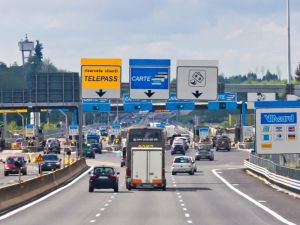Airport, EU – Baltic States, Investments, Railways, Transport
International Internet Magazine. Baltic States news & analytics
Saturday, 27.04.2024, 02:57
PwC: Central and Eastern Europe needs more efficient transport infrastructure
 Print version
Print version |
|---|
The PwC representatives said that
in order to promote investing in transport and infrastructure, the Three Seas
Initiative has been proposed by several key stakeholders in the CEE region as a
way of facilitating investment and development in order to address imbalances
and boost economic figures. The CEE region, which also includes Latvia and is
joined by the Baltic, Black and Adriatic Seas, accounts for 28% of the EU’s
territory and 22% of the population, but only for 10% of the bloc’s GDP.
PwC notes that
although investment in the Tree Seas region’s transport infrastructure have already
exceeded EUR 150 billion, the financing needs for transport infrastructure have
been estimated at EUR 615 billion through 2025. In their report “The road ahead
– CEE transport infrastructure dynamics”, PwC
and the Atlantic Council outline the key challenges and opportunities for the
Three Seas Initiative in the area of transport infrastructure. The report
analyzes investment promoting opportunities and the five main transport
corridors expected to play an especially important role in connecting the countries
of the Three Seas region: North Sea-Baltic, Baltic-Adriatic, Rhine Danube,
Orient/East-Med and Mediterranean.
Over EUR 384 billion are still needed for more than 200 projects to
complete these transport corridors, according to the report.
One of the Three Seas Initiative’s most important tasks is to build an
effective financing process for transport infrastructure that would allow
closing the gap between the East and the West. At present, a citizen of the
“old EU” has on average twice as many kilometers of motorways to drive on than
his/her counterpart in CEE.
“Despite progress in recent years, there is still a great need here in CEE
for more efficient and modern transport infrastructure to support our growth
aspirations. Given the need, we expect construction market growth in CEE to be
3.1% and outpace that of Western Europe over the next five years. For this to
happen, we will need to continue to attract investment from both public and
private sources,” says Agnieszka
Gajewska, Partner at PwC and CEE
Capital Projects & Infrastructure Leader.
Representatives of Latvia, who also took part in the study, confirmed the
necessity for Latvia to integrate with Europe’s transport network and take a
broader look at a more distant future.
“To be competitive, we need to integrate with the common transport network,
develop our railways, motorways and seaways, as well as their infrastructure,
and maintain them in a good condition. Latvia has already implemented
significant infrastructure projects, such as Riga Airport, which is a major air
traffic hub, and the Dienvidu (Southern) bridge, which is being increasingly
used for traffic in Riga Region. We have courageously launched the biggest and
most complex transport infrastructure project in the EU’s history – Rail
Baltica,” said Baiba Apine, head of
the business management consultations at PwC.








 «The Baltic Course» Is Sold and Stays in Business!
«The Baltic Course» Is Sold and Stays in Business!

